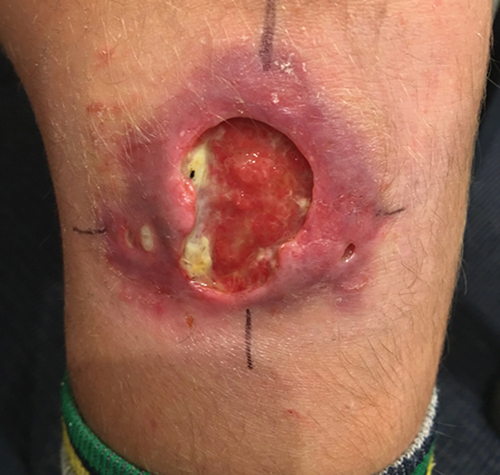Feature
Questions persist as Buruli ulcer cases continue to spread
As cases of the disease make their way to the city, researchers continue to grapple with determining its causes.
 Mosquitoes and contaminated soil are two suspected methods of transmission.
Mosquitoes and contaminated soil are two suspected methods of transmission.
WARNING: ARTICLE CONTAINS GRAPHIC IMAGE
Cases of the flesh-eating tropical disease Buruli ulcer – or Bairnsdale ulcer, as it is sometimes known in Victoria – have exploded in the state over the past several years, with a final count of 340 reported in 2018, compared to 277 in 2017 and 182 in 2016.
While the majority of cases are reported in the state’s south, diagnoses have also recently been made in Melbourne’s inner-city areas, with two confirmed cases in the western suburbs.
The ulcer, caused by bacterium mycobacterium ulcerans, can cause large, destructive lesions of skin, soft tissue and even bone.
Associate Professor Daniel O’Brien, Deputy Director of the Department of Infectious Diseases, Barwon Health, has predicted Victoria will experience 500 cases a year within two years if numbers continue to rise at their current rate.
In addition, Associate Professor O’Brien has found cases of the ulcer are becoming more serious and taking longer to heal.
‘It is an aggressive disease that’s not easy to treat. It’s not your usual bacteria, so normal antibiotics don’t work,’ he said.
‘I’m seeing a higher proportion of severe disease; that is, much worse cases than we did about five years ago.’

The ulcer can cause large, destructive lesions of skin, soft tissue and even bone. (Image: AAP)
Although the method of transmission for the ulcer remains unknown, theories include contaminated soil, water, and transmission via animals. There is also strong evidence that mosquitoes play a large part, with significant state and federal funding allocated to a Victorian study on this particular vector.
The question that particularly baffles researchers is why the tropical disease has taken such a hold in Victoria, while it has declined in North Queensland (where it is also known as Daintree ulcer).
The highest risk area in Victoria is currently concentrated in the Mornington Peninsula in the state’s south, while adjacent areas Frankston and Seaford, and the Bellarine Peninsula in the south-west are of moderate risk. East Gippsland in the eastern part of the state is deemed an area of low but material risk, as are the South Eastern Bayside suburbs.
 Increased incidence of Buruli ulcer in Victoria. (Reproduced from Department of Health and Human Services. Melbourne: DHHS, 2019 [Accessed 15 January 2019]).
Increased incidence of Buruli ulcer in Victoria. (Reproduced from Department of Health and Human Services. Melbourne: DHHS, 2019 [Accessed 15 January 2019]).
Living in or visiting an endemic area is the most important risk factor for contracting the disease, and people can potentially contract the Buruli ulcer from a single visit.
The Victorian Department of Health does recommend some preventive measures, including wearing protective clothing when gardening, immediately cleaning any cuts or abrasions, washing skin that has been contaminated with soil or water from suspect sources, and mosquito safety.
But until the source of the disease’s transmission is identified, the effectiveness of any preventive advice is uncertain.
‘Certainly from a scientific perspective, it’s a puzzle,’ CSIRO infectious diseases scientist Dr Kim Blasdell said.
‘We can make possible suggestions to people [such as] wear gardening gloves, wear long-sleeve tops and things like that, but we can’t say for sure that it will protect people.’
However, while the question of transmission is still under investigation, medical treatment is extremely effective with an almost 100% cure rate, as long as the ulcer is identified early – a task that can be difficult, as it often begins as a small, painless lump that can stay dormant for months before erupting.
The RACGP offers an educational activity on gplearning, ‘Identifying and managing Buruli ulcer’, to assist GPs in the timely diagnosis of this disease. The activity covers a number of different areas, including:
- those most at risk
- how to distinguish Buruli ulcer from other skin ulcers
- investigations
- treatment
- prevention
- where to refer.
Visit the
gplearning website for more information and to access the module.
Buruli ulcer flesh-eating ulcer tropical diseases Victoria
newsGP weekly poll
Health practitioners found guilty of sexual misconduct will soon have the finding permanently recorded on their public register record. Do you support this change?